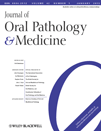Oral human β-defensin 2 in HIV-infected subjects with long-term use of antiretroviral therapy
Abstract
Background: The objectives of this study were to determine (i) oral hBD2 expression in HIV-infected subjects compared with non-HIV controls, (ii) the expression of oral hBD2 in HIV-infected subjects with antiretroviral therapy (ART) compared with those without ART, and (iii) factors associated with the expression of oral hBD2.
Methods: Oral examination and punched biopsy on buccal mucosa were performed in HIV-infected subjects with and without ART, and non-HIV individuals. The expression of hBD2 mRNA was determined by quantitative real-time PCR. Saliva samples of both un-stimulated and stimulated saliva were collected and analyzed for hBD2 levels using ELISA. Student’s t-test and nonparametric multi-way ANOVA test were used for comparison of measurements between or among groups.
Results: One hundred and fifty-seven HIV-infected subjects were enrolled: 99 on ART (age range, 23–57 years; mean 39 years), 58 not on ART (age range, 20–59 years; mean 34 years), and 50 non-HIV controls (age range, 19–59 years; mean 36 years). The most common ART regimen was two nucleoside reverse transcriptase inhibitors + one non-nucleoside reverse transcriptase inhibitor. Salivary levels of hBD2 were significantly increased in HIV infection (P < 0.001). The levels of hBD2 in stimulated saliva were also found to be significantly different between HIV-infected subjects who were and were not on ART (P < 0.001). No significant difference was observed with the expression of hBD2 mRNA.
Conclusion: Oral innate immunity is affected by HIV infection and use of ART. Salivary hBD2 levels may be the useful biomarkers to monitor those on long-term ART who are at risk of developing oral infections and malignant transformation.




